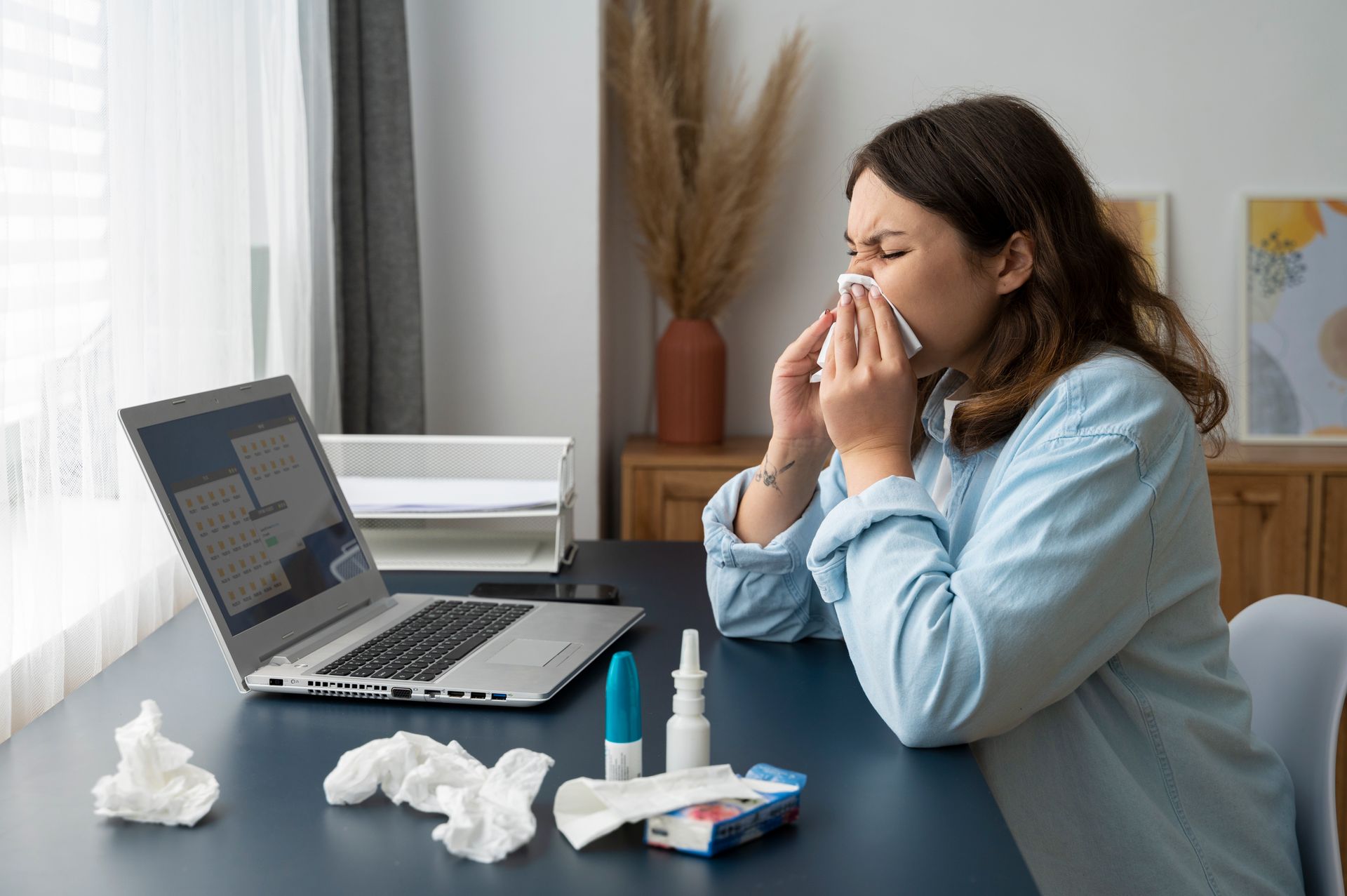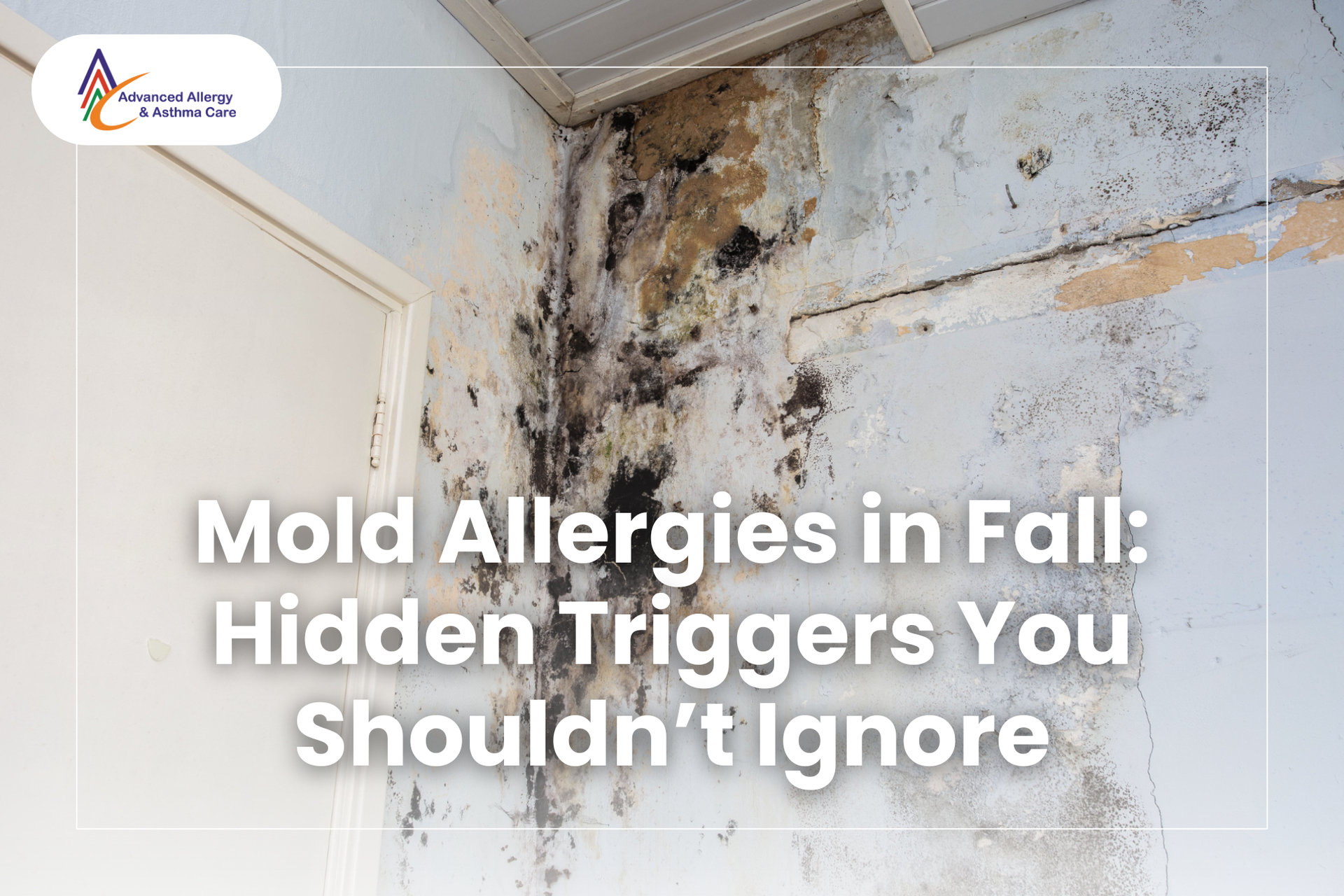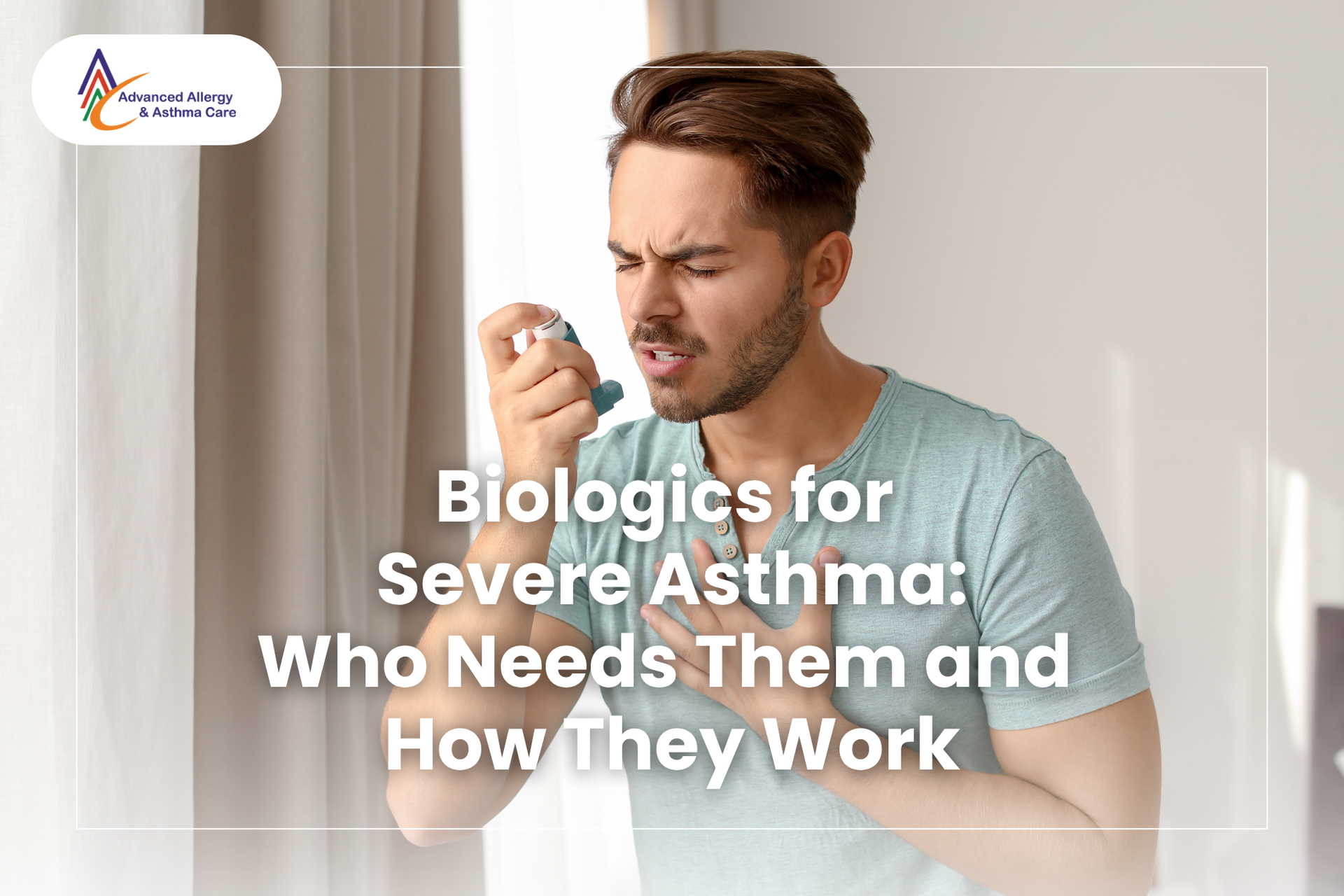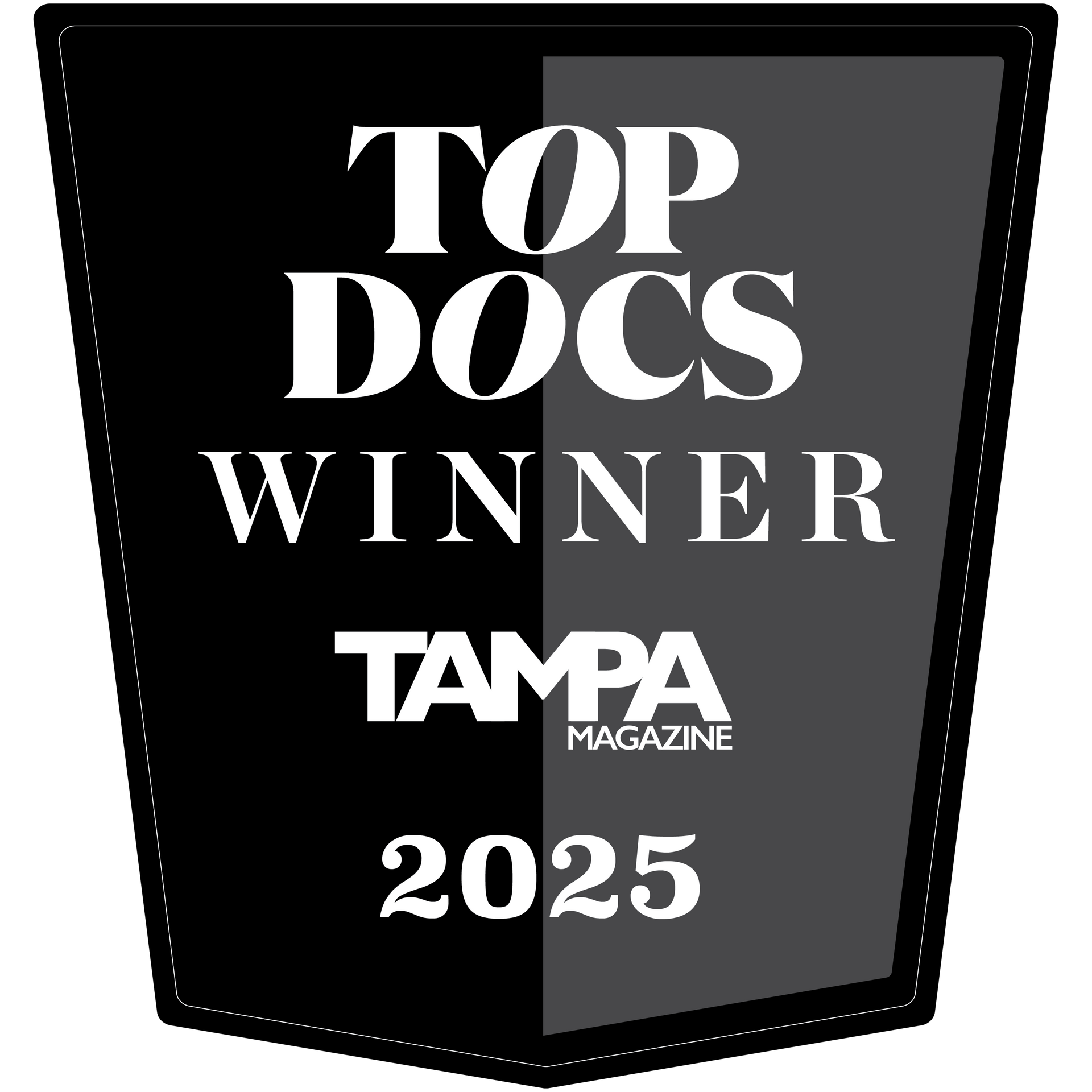Summer brings vacations, backyard BBQs, and open windows—but it also fuels one invisible intruder: mold. While a year-round risk, it is especially prevalent in the summer when warm, humid conditions create a perfect environment for it to thrive, hiding in places you’d least expect.
If you’re waking up feeling stuffy or sneezing when the AC kicks on, mold exposure in summer could be the culprit. From bathroom tiles to garden mulch, mold grows wherever moisture lingers, and its impact reaches far beyond a musty smell.
At
Advanced Allergy & Asthma Care, we understand how frustrating it is to deal with unexplained symptoms, especially when you’re not sure what’s causing them. That’s why our team is here to help eliminate the guesswork, offering personalized testing and care that makes it easier to pinpoint if mold is part of the problem.
Could mold be behind the congestion, rashes, or fatigue you’re feeling? Don’t wait to act.
Find Relief That Lasts Through Summer
Schedule An Allergy Evaluation
What Are Mold Allergies?
Mold allergies happen when your
in the air. While mold naturally exists in the environment, certain types trigger allergic reactions, especially in sensitive individuals or those with asthma. Understanding the core factors that cause mold allergies in summer helps you protect your home and health.
Why Mold Grows More in Summer
Mold loves moisture and heat—two things abundant in summer. They reproduce by spreading tiny particles called spores into the air. Inhaling these spores—especially in damp, poorly ventilated areas—can irritate the respiratory system and trigger allergy symptoms, such as sneezing and asthma flare-ups.
In addition, certain factors accelerate the growth and increase the risk of mold exposure in summer:
- High Temperatures
- Heavy Humidity
- Poor Ventilation
- Water Leaks
It is essential to conduct routine maintenance in your home and to remain vigilant against mold—even after summer.
Types of Mold Allergies
Not all mold causes allergic reactions, but a few common types are more likely to trigger symptoms. Here’s what they are and where they usually show up:
These molds thrive in moisture and can spread quickly once they take hold. Knowing where they tend to grow makes it easier to catch early signs and clear them out before they impact your health.
Common Mold Allergy Symptoms to Watch For
Mold allergies can affect various parts of the body in different ways, often mimicking colds or seasonal allergies. But unlike those, mold allergy symptoms tend to worsen indoors. Learning to recognize the symptoms helps you act early and effectively.
The most common signs of mold allergy that affect breathing include:
- Sneezing
- Nasal congestion
- Coughing
- Wheezing
- Shortness of breath
- Postnasal drip
People with asthma may experience more flare-ups in humid or musty environments.
Skin and Eye Reactions
Mold spores also irritate the
skin and eyes. Common symptoms include:
- Red, itchy, or watery eyes
- Dry, scaly skin
- Hives
- Eczema-like rashes
These reactions are more common in individuals with sensitive skin or those who have experienced prolonged mold exposure.
Signs You Might Need Mold Allergy Testing
If symptoms don’t improve with treatment, consider getting
allergy testing for mold. Pay attention if symptoms ease when you're away from home or worsen in specific rooms. Testing helps pinpoint the mold types causing the reaction so you can take the right actions.
Here's a quick reference table to help you assess symptoms at home:
High-Risk Mold Areas in Summer
Mold needs moisture, warmth, and time to grow—and summer delivers all three. Knowing where
mold thrives inside and outside your home helps you prevent it. Watch for indoor mold exposure, outdoor mold sources, and mold in air conditioner systems.
Indoor Mold Hotspots (Bathroom, Basement, AC Units)
Indoors, mold grows in damp, poorly ventilated areas. Common hotspots include:
- Bathrooms with poor ventilation
- Basements with high humidity
- Air conditioning units or HVAC systems with dirty filters or trapped moisture
Mold in air conditioner units spreads spores throughout your home every time the system runs, especially if the filters remain unchanged.
Outdoor Mold Risks (Yard, Compost, Mulch)
Outside, mold thrives in organic matter. Key outdoor mold sources include:
- Piles of leaves or grass clippings
- Compost bins
- Mulch beds
- Damp garden tools or shaded corners
These areas affect kids who play outside or adults doing yard work—especially after it rains.
Mold Growth in High-Humidity Environments
High humidity acts like fertilizer for mold. Poorly ventilated spaces are especially vulnerable, such as:
- Closets
- Garages
- Laundry rooms
These rooms often go unnoticed but carry a high risk—especially in tropical or storm-prone regions. Monitor indoor humidity and fix leaks quickly to lower the risk of indoor mold exposure.
Effective Mold Allergy Treatment Options
When avoidance isn’t enough,
. Managing symptoms through the right interventions can bring fast relief and long-term control.
Over-the-Counter Remedies
The most accessible mold allergy treatment options include:
- Antihistamines for sneezing, runny nose, and itchy eyes
- Nasal corticosteroid sprays to reduce inflammation
- Decongestants for temporary sinus relief
These help ease mild symptoms but may not be enough for persistent cases.
Prescription Medications
Doctors may prescribe additional support for moderate to severe symptoms, such as:
- Stronger antihistamines or nasal sprays
- Leukotriene modifiers to reduce inflammation
- Oral corticosteroids for severe flare-ups
These can offer targeted relief when over-the-counter options aren’t effective.
Allergy Shots and Immunotherapy
For families seeking long-term results, the
best treatment for mold allergies may come from immunotherapy.
Allergy shots desensitize the immune system over time and can:
- Reduce mold sensitivity
- Lower symptom severity
- Improve overall asthma control if mold is a trigger
Immunotherapy offers gradual but lasting benefits—and is often recommended when other methods fall short.
Allergy relief for mold may take time, but it can significantly improve daily comfort and long-term health.
When to See a Doctor for Mold Allergies
If home remedies aren’t working, or symptoms are interfering with daily life, it’s time to call in professional support. Knowing the signs you need professional help can prevent complications and improve long-term outcomes.
Book an appointment with an allergy doctor if:
- Symptoms last more than two weeks
- Breathing becomes difficult, or asthma worsens
- Over-the-counter meds don’t work
- You suspect mold exposure but can’t locate the source
Early intervention keeps allergies from escalating.
Allergy Testing and Diagnosis
Advanced Allergy & Asthma Care offers mold allergy testing to identify exactly which type is causing your child’s reactions. These tests can include:
- Skin prick tests
- Blood tests (IgE levels)
Testing informs treatment and helps create a targeted plan.
Long-Term Management Plans
For recurring or chronic mold allergy symptoms, long-term care matters. Providers can create a personalized allergy action plan that may include:
- Environmental control strategies
- Medication adjustments
- Immunotherapy if appropriate
Continued check-ins with your allergist ensure the plan adapts as your needs change.
How Advanced Allergy & Asthma Care Can Help
Mold thrives in summer, but with the right knowledge and habits, you can stay one step ahead. At Advanced Allergy & Asthma Care, we believe early action is essential. Our team is here to help you understand the risks, treat the symptoms, and prevent mold from affecting your health.
If you're starting to notice signs of mold sensitivity, don’t wait for symptoms to get worse. Take action now to reduce allergy symptoms in the summer with targeted testing and care.
Breathe Better, Breathe Easier.
Book an Allergy Consultation Now
Frequently Asked Questions
How can I tell if mold is causing my allergy symptoms?
Our allergists recommend monitoring symptoms for improvement when you leave home or worsening in specific rooms. If symptoms are consistent and triggered indoors, schedule mold allergy testing to confirm the source.
What are the best ways to reduce mold exposure at home?
Our team recommends using dehumidifiers, maintaining indoor humidity between 30% and 50%, and scheduling regular HVAC maintenance. We also recommend cleaning damp areas frequently and addressing any water damage immediately.
What symptoms should I look out for with mold allergies?
We frequently diagnose mold allergies in patients who experience chronic symptoms such as sneezing, congestion, itchy eyes, skin rashes, and asthma flare-ups. If symptoms don’t resolve with typical allergy medications, it’s time to consult a specialist.
What is the most effective treatment for mold allergies?
At Advanced Allergy & Asthma Care, we often recommend immunotherapy as the most effective long-term solution for mold allergies. Paired with lifestyle changes and prescription treatments, allergy shots can greatly reduce sensitivity and improve your overall quality of life.










